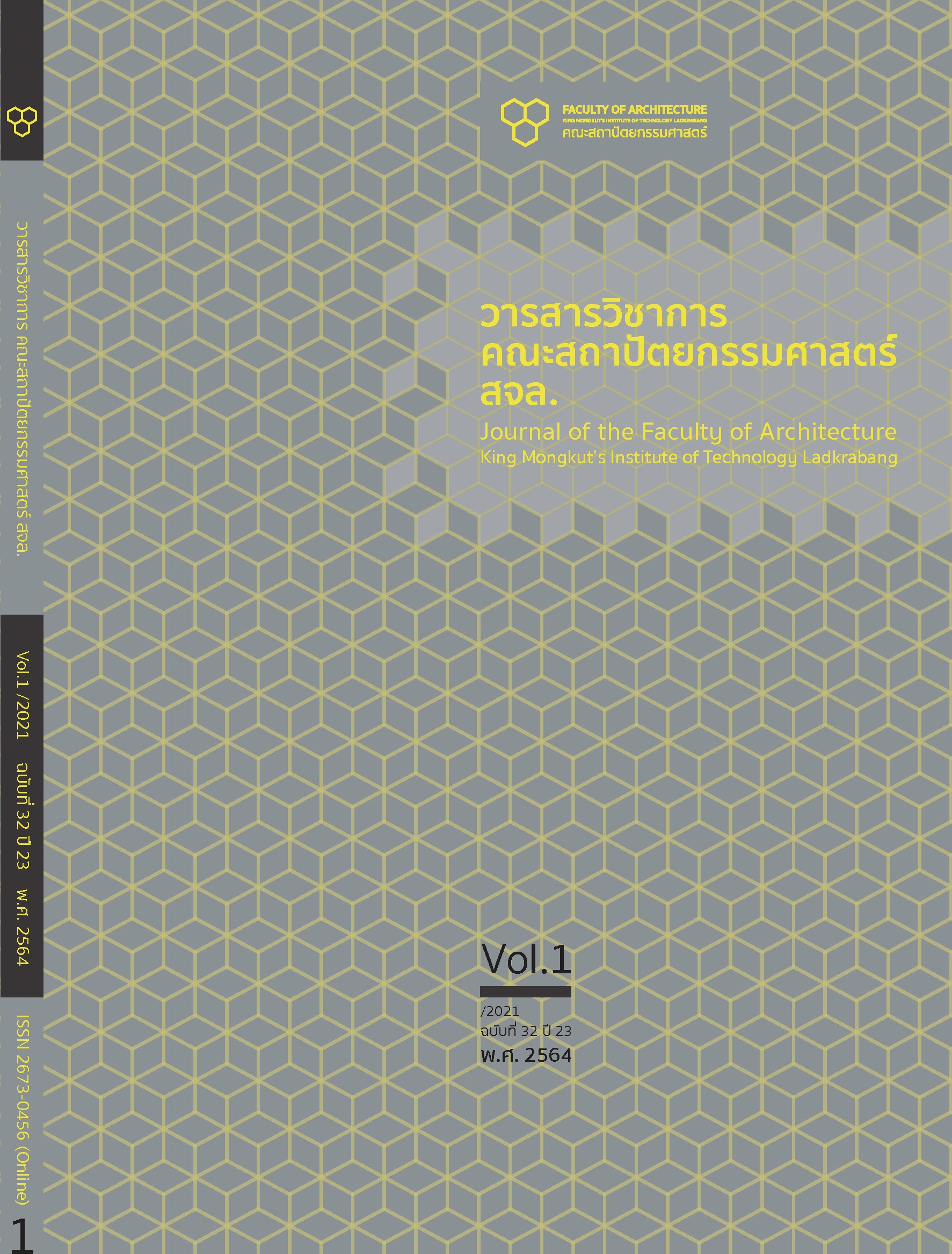Guideline for Character Design: A Case Study of ‘Character Design Challenge’
Main Article Content
Abstract
This creative research aims at contributing to knowledge in character design, using character design contest ‘Character Design Challenge’ as a case study. The objectives are: 1) To search for guideline for character design; 2) To design characters. The research method employs in-depth interviews with twelve experts, aged between 25-45 years. Nine of them including designers, art directors, head of story, university instructor have at least ten years of character design experience in the industry. The other three are intermediate skilled designers with at least three years of work experience. The finding shows that guideline for character design consists of the four components: 1) Developing Character – besides story, character profile, archetype and character style, designer needs to think inside-out as being a character in order to better understand the character; 2) Character Expressions – apart from body language and facial expressions, designer should pay attention to viewing angles to enhance the visual interest of the characters. 3) Design Elements and Principles – since they have an important role in character stylization, designer needs to find balance in stylizing characters and choose design elements and principles in relation to character’s personality so the design can effectively present the character’s physical attributes; 4) Design Process - good research process brings new ideas to design. Five pieces of character design work demonstrate that clarity in communication and character’s attractiveness are crucial. Once the four components work together effectively, clarity in communication and character’s attractiveness occur. The research knowledge can be adopted as a guideline for character design.
Article Details
This work is licensed under a Creative Commons Attribution-NonCommercial-ShareAlike 4.0 International License.
Copyright Transfer Statement
The copyright of this article is transferred to Journal of The Faculty of Architecture King Mongkut's Institute of Technology Ladkrabang with effect if and when the article is accepted for publication. The copyright transfer covers the exclusive right to reproduce and distribute the article, including reprints, translations, photographic reproductions, electronic form (offline, online) or any other reproductions of similar nature.
The author warrants that this contribution is original and that he/she has full power to make this grant. The author signs for and accepts responsibility for releasing this material on behalf of any and all co-authors.
References
ชลูด นิ่มเสมอ. (2557). องค์ประกอบของศิลปะ. กรุงเทพฯ: อัมรินทร์พริ้นติ้งแอนด์พับลิชชิ่ง.
ระรินทร์ โรจนวัฒนวุฒ. (2555). การสร้างสรรค์รูปแบบลักษณะตัวละครการ์ตูนโดยใช้อัตลักษณ์ล้านนา. วารสารวิจัยราชภัฏเชียงใหม่. 13(2), 116-128.
วงศ์วรุตม์ อินตะนัย. (2561). การออกแบบตัวละครนายแรงสำหรับสื่ออินโฟกราฟิกจากตำนานหัวนายแรง. ในการประชุมวิชาการด้านมนุษยศาสตร์และสังคมศาสตร์ระดับชาติ ครั้งที่ 1. (หน้า 41-49). สงขลา: คณะมนุษยศาสตร์และสังคมศาสตร์ มหาวิทยาลัยราชภัฏสงขลา.
สำนักงานส่งเสริมเศรษฐกิจดิจิทัล (a). (2562). บทวิเคราะห์สถานการณ์เศรษฐกิจดิจิทัลประเทศไทย. เข้าถึงได้จาก: https://www.depa.or.th/en/article-view/thailands-digital-economy-glance.
สำนักงานส่งเสริมเศรษฐกิจดิจิทัล (b). (2562). ระบบนิเวศของอุตสาหกรรมดิจิทัลคอนเทนต์ไทย ตอนที่ 3 (สาขาแคแรค-เตอร์). เข้าถึงได้จาก: https://www.depa.or.th/th/article-view/3-digital-content-series-character.
Ancient Pages. (2018). Freya – Vanadis: Beautiful Desirable Goddess And Her Brisingamen Necklace In Norse Mythology. Retrieved from: https://www.ancientpages.com/2018/01/21/freya-vanadisbeautiful-desirable-goddess-and-her-brisingamen-necklace-in-norse-mythology/
Bokksu. (2019). Essential Guide to Japanese Monsters. Retrieved from: https://www.bokksu.com/blogs/news/essential-guide-to-japanese-monsters.
Colman, D. (2010). The Art of Character Design Vol. 1 [DVD]. US: David's Doodles.
Gontar, C. (2006). “Art Nouveau.” In Heilbrunn Timeline of Art History. Retrieved from: http://www.metmuseum.org/toah/hd/artn/hd_artn.htm.
History of Yesterday. (2020). The Elite Aztec Warriors. Retrieved from: https://historyofyesterday.com/the-elite-aztec-warriors-36cbd89705f8.
Islam, M.T, Nahiduzzaman, K.M., Why, Y.P., Ashraf, G. (2010). Learning Character Design from Experts and Laymen. Proceedings of 2010 International Conference on Cyberworlds. (pp. 134-141). Singapore: School of Computer Engineering, Nanyang Technological University.
Miketic, N., Pintier, I. & Lilic, A. (2018). Intergration of the Visual Elements of Art and Personality Factors in Process of Character Design. 9th International Symposium on Graphic Engineering and Design. Serbia: Department of Graphic Engineering and Design, University of Novi Sad.
Modern Nurse. (2019). What Do You Think? –Are We Working Nurses To Death? Retrieved from: https://modernnurse.com/what-do-you-think-are-we-working-nurses-to-death/.
Pearson, C. (2015). Awakening the Heroes Within and What Story Are You Living?. San Francisco: HarperOne.
Silver, S. (2017). The Silver Way: Techniques, Tips, and Tutorials for Effective Character Design. California: Design Studio Press.
Stanchfield, W. (2009). Drawn to Life: 20 Golden Years of Disney Master Classes: Volume 1: The Walt Stanchfield Lectures. Massachusetts: Focal Press.
Tate (2018). MANNERIST. Retrieved from: https://www.tate.org.uk/art/art-terms/m/mannerist.
The Telegraph. (2016). Brazil's carnival season gets into full swing in Rio and Sao Paulo, in pictures. Retrieved from: https://www.telegraph.co.uk/news/picturegalleries/worldnews/12144266/Rio-de-Janeiro-and-Sao-Paulo-carnivals-in-Brazil-in-pictures.html.
Tillman, B. (2011). Creative Character Design. Massachusetts: Elsevier.


